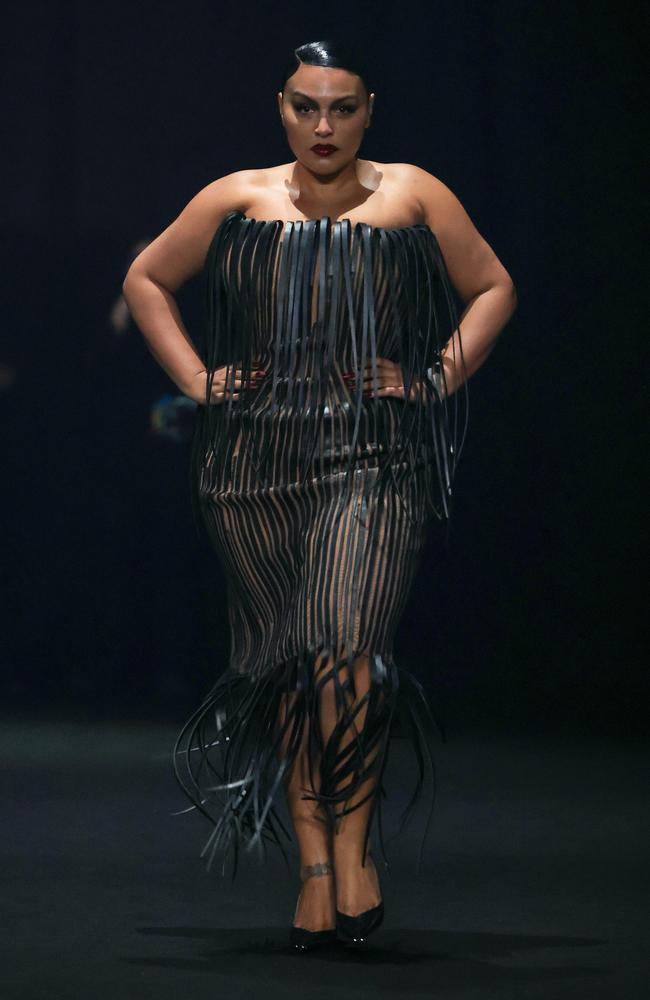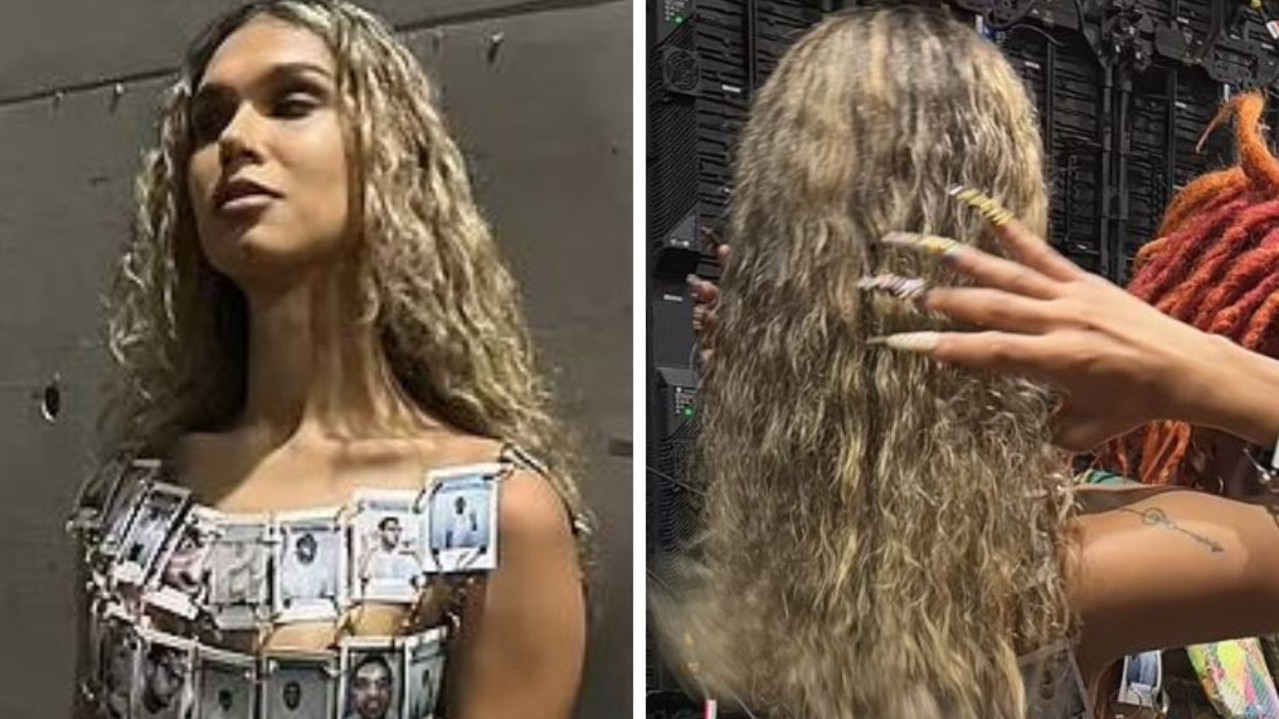‘Horrendous’: 0.8 per cent of models at AW24 womenswear shows were plus-size
It is a picture that should bring joy. But instead it is part of a massive problem with the fashion industry that is leaving many furious.
Less than one per cent of models at the Autumn/Winter 24 womenswear shows were plus-size, new analysis has revealed, proof that the fashion industry’s dalliance with models above an Australian size 8 is all but over.
Vogue Business’ twice-yearly size inclusivity report looked at all 230 shows and presentations on Vogue Runway to determine the proportion of the 8800 total looks that were straight-size (US 0-4 or Australian 4-8), mid-size (US 6-12 or Australian 10-16) and plus-size (above a US 14 or Australian 18).
Taking into account fashion week in all four cities – New York, London, Milan and Paris – the analysis found just 0.8 per cent were plus-size, and a mere 3.7 per cent were mid-size, meaning the overwhelming majority (95.5 per cent) of looks presented were in a straight-size.
Legacy houses like Gucci, Balenciaga and Valentino – which in recent seasons had begun adding plus and mid-size models to their runways – reverted back to historic norms, with 100 per cent straight-sized models walking in their respective shows.
“The industry has in recent years looked to be moving in a more positive direction, but this last show season felt like a huge step back with most runways showcasing a very tall and very slim silhouette again,” women’s director at model agency Supa, Tim Clifton-Green, told Vogue Business.
“For too long the fashion industry has sidelined certain body shapes and naturally, without exposure in the media, there have not been enough inspirational diverse role models to look up to.”


Just a handful of curve supermodels like Jill Kortleve, Paloma Elsesser, Precious Lee and Ashley Graham have therefore been left to carry the weight of representation on their back
Elsesser – who has made history at luxury houses like Fendi, Alexander McQueen and Balenciaga – became the first plus-size woman to take home Model of the Year at the British Fashion Awards in December. The 31-year-old, however, faced a barrage of derogatory, fatphobic abuse, forcing her off social media.
Reflecting on the bittersweet victory in an essay for The Cut last month, Elsesser noted that “fatphobia has become acceptable again” over the last few years.
“I’m protective of the fashion industry, but it’s become evident that many of the same people who talk about making these huge strides in representation are also painfully resistant to change,” she wrote.
“And what about my role in their narrative? The industry may carve out space for a select few names like mine, but it firmly shuts the door on countless others. The pride in being part of a list of ‘firsts’ is fading; being the first curve model for a campaign loses its significance when the brand fails to open its doors to the fourth, fifth, sixth, seventh.”


Graham echoed the sentiment in an interview with Vogue Business in February.
“When one of us steps out of a season, it’s disruptive because unfortunately there aren’t a lot (of curve models) that are at the top,” the US model said.
“Which is crazy because you could go to the top three agencies that have mid-size and plus-size models and you could find insanely gorgeous women that have been signed on for decades.”
The overwhelming response to the Vogue Business report by consumers on social media was one of fury.
“Fashion houses like @versace, @louisvuitton, @prada, @dior etc had NO BODY DIVERSITY? Is that what I am seeing? This is horrendous,” one woman wrote on Instagram.
“This is so very disappointing. Please more BODY DIVERSITY on the runways!!”
Mina White, the director at IMG Models, told Vogue Business that it’s up to industry leaders – like high-profile editors and company CEOS – to speak up in order to affect meaningful change.
“They need to be saying, ‘the less we show diversity, the worse we’re doing in business’. We need to back to the drawing board and say, where are the holes? Who are we not reaching out to? Who are we not communicating with? Who are we not listening to?” Ms White said.
Mandates on brands that go up to a US size 18 to actually represent body diversity on their runways also need to be established, she added.
“At minimum, we should be having four to six looks in every show that are body diverse – somewhere in the scale of what you sell to your consumer,” she said.
“(The industry leaders need to say): ‘This is a mandate because this is where the industry is moving. This is a mandate because this is what it looks like numerically for these brands’.”






